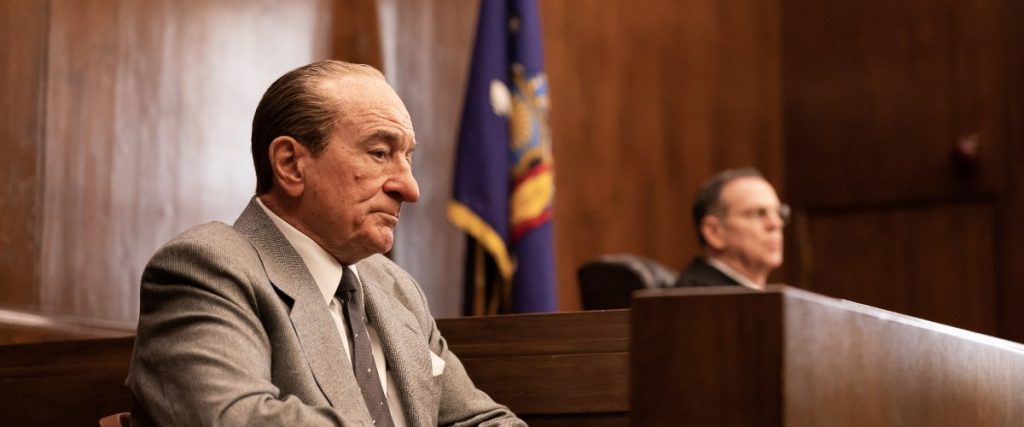Introduction to “The Alto Knights”
Set in 1957, mobster Frank Costello, portrayed by Robert De Niro, steps out of a yellow cab and confidently walks into a New York City skyscraper. As he waits for the elevator, his stylish grey suit and matching fedora stand out against the chic walnut decor of the lobby. A distorted reflection of Costello in the double mirrors hints at the duality that will be central to Barry Levinson’s biographical mob drama, “The Alto Knights.” This theme of duality is starkly illustrated when a bullet from an assassin, sent by Costello’s rival Vito Genovese (also played by De Niro), narrowly misses Costello’s head, shattering the mirror.
De Niro’s Familiar Territory
De Niro has frequently portrayed composed gangsters, and the challenge of embodying conflicting roles in Levinson’s film likely enticed him. However, despite the intriguing concept, Levinson’s predictable storytelling offers little that feels fresh. One might argue against expecting innovation from a filmmaker who has seen better days since his “Wag the Dog” peak, and his prestigious star. Yet, “The Alto Knights” emerges as a tired rehash rather than a tribute to the genre.
Contextual Comparison within De Niro’s Career
When contextualizing “The Alto Knights” within De Niro’s career, this film fails to capture the vibrancy of a fast-paced lifestyle akin to “Goodfellas,” or the neighborhood exploration found in “A Bronx Tale.” Unlike the reflective nature of “The Irishman,” Levinson’s approach is reminiscent of “Casino,” focusing on two close friends who become adversaries amid a shifting environment. Lacking the depth, passion, and unpredictable energy that Joe Pesci typically brings, this rendition feels like a laborious slog.
Plot Overview and Historical Context
In “The Alto Knights,” penned by “Goodfellas” writer Nicholas Pileggi, De Niro takes on the role of Costello, the quiet leader of the Luciano crime family. Those familiar with mob history will recognize Costello, while Levinson introduces historical elements through a documentary style. De Niro narrates as Costello reminisces about his rise from bootlegging to becoming a political influencer via Tammany Hall. His close friend, the notorious Vito Genovese, is an essential figure until he escapes to Italy in 1937 to evade a murder conviction. After nearly a decade in hiding, he returns to the U.S. to claim his former power.
Thematic Limitations and Character Dynamics
Films like “Casino” and “Once Upon a Time in America” suggest that the fractured relationship at the narrative’s core could have been grand. In fact, the concept for “The Alto Knights” has circulated in Hollywood since the 1970s, originally titled “Wise Guys.” However, instead of delivering a cohesive chapter of American history, the film portrays a simple quarrel between two elderly men, lacking thematic foundation.
Performance and Direction Issues
The intimate focus on the dynamics between two scheming crime leaders would be engaging if it didn’t stretch De Niro too thin. Although Costello taps into the composure reminiscent of Ace Rothstein, De Niro struggles to capture the explosive essence of Genovese. While the screenplay leans heavily on recycled backstory, Genovese is not poorly constructed; the differences between him and Costello are clear, yet De Niro’s portrayal fails to explore these layers. He often presents a single-note performance, aiming for intensity even in subdued moments.
Final Thoughts on “The Alto Knights”
While I wouldn’t outright label “The Alto Knights” as a bad film, the period details—from suits to interiors—are striking, and even supporting roles from Debra Messing and Kathrine Narducci inject some energy into the otherwise monotonous narrative. The film features moments of tension, like Costello’s Senate testimony and the infamous Apalachin meeting. Yet overall, as a gangster film, “The Alto Knights” lacks the freshness and engaging sights that should accompany such a story.



